- Home
- ILIL ARBEL
ANCIENT ALIENS: MARRADIANS AND ANUNNAKI: VOLUME ONE: EXTRATERRESTRIAL HOLIDAYS
ANCIENT ALIENS: MARRADIANS AND ANUNNAKI: VOLUME ONE: EXTRATERRESTRIAL HOLIDAYS Read online
ANCIENT ALIENS:
MARRADIANS
AND ANUNNAKI
Volume One:
Extraterrestrial Holidays
“I'm a big fan of Gary Morgenstein's writing, especially the delightful satire Right on Target and the touching coming-of-age play A Tomato Can't Grow in the Bronx.”
Mara Lesemann
writer/producer, Detours and Surviving Famiily
“Ilil Arbel is a wonderful story teller and a superb researcher and scholar. I am proud to be her co-author for the two books we worked on together.” Maximillien de Lafayette, author and extraterrestrial expert
“I had the pleasure of directing two of Gary Morgenstein's plays. His smart sense of humor is certain to give you something to enjoy.”
Carlo Fiorletta, actor/producer "Detours" movie
“Ms. Arbel has a wonderful imagination and the ability to transport a reader... You not only read this novel, you see the settings and characters. Yeah, it's that good. I'm a pain in the neck about details and she did enough research to get it right.”
Wayne Zurl, Author of the Sam Jenkins Mystery Series and former Chief of Police
“A unique look at two alien races that will take you on an entertaining science fiction journey”
Jamie Ruby, SciFi Vision
“Ilil Arbel demonstrates her superb gift for writing... The book is filled with rich and lively detail, giving the sense of actually seeing the characters and places she describes.”
Earl B. Russel, Professor Emeritus, Author of Cold Turkey at Nine
“Unveiling the fascinating & mysterious worlds of the Marradians and Anunnaki! An absorbing new work by renowned alien hybrids writer Ilil Arbel, and Gary Morgenstein, author of the play Mad Mel and the Marradians."
Mike Sargent, host and critic of WBAI radio
Title: Ancient Aliens: Marradians and Anunnaki
Authors: Ilil Arbel, Gary Morgenstein
Date of Publication: December 2016
Copyright © 2016, Ilil Arbel & Gary Morgenstein
All rights reserved and remain with Ilil Arbel and Gary Morgenstein, printed by permission. Except for review, no part of the publication may be reproduced or transmitted in any form or by any means, electronic or mechanical, including photocopying, recording, or any information retrieval system without permission from the author.
Published in the United States of America
ILIL ARBEL is the author of a number of fiction and non-fiction books, including biographies, memoirs, novels, mythology/folklore, and metaphysics. Two of her books are factual biographies of alien hybrids, both of them descendants of Anunnaki: Anunnaki Ultimatum: End of Time, and On the Road to Ultimate Knowledge. Ilil had done extensive research on both the Anunnaki and the Marradians (erroneously called The Grays); her study of the subject was done while living in Tel Aviv, Paris, and New York. Some of the resulting material is published on the award-winning Encyclopedia Mythica online.
GARY MORGENSTEIN most recently wrote the critically acclaimed off-Broadway sci-fi rock musical The Anthem. His plays range from A Tomato Can’t Grow in the Bronx and Right on Target to Ponzi Man, with novels including Jesse’s Girl; Loving Rabbi Thalia Kleinman; Take Me Out to the Ballgame and The Man Who Wanted to Play Center Field for the New York Yankees. He is creator-writer of the sci-fi audio adventure series Mad Mel and the Marradians. Morgenstein is currently completing the first novel in his science fiction trilogy, set on the eve of the 22nd Century after the United States has lost World War Three to Islam.
Table of Contents
Part One: Marradian Holidays
Introduction
Ashar Marrad
Rituals, Prayers and Traditions
Families and Ashar Marrad
The Ashar Marrad Meal
Appetizers
Entrees
Dessert
Refreshments
After Dinner
The Do-Nald, Leader of The Marradians
The First Do-Nald
Becoming the Do-Nald
The Current Do-Nald
Celebrating the Do-Nald
The Drink
Cimric’s Birthday, Cimric B’wa
Cimric the God and the Mortal
The Prayers
The Celebration
The Game
The Food
The Songs, the Hymns
Egok the Cross-Limbed
The Early Years
The Celebrations
The Food
The Anunnaki Festival of Lights
The Food
The Anunnaki and Marradian New Years
Ringing In the New Year
The Gowns
The Games
The Dances
The Food
The Anunnaki New Year
The Ceremony
The Food
The Table
The Party
Romance and Varnishing
Yom Ha-Or, the Anunnaki Mingling of Lights
P’eto, the Varnishing
Part Two: Marradian and Anunnaki History and Culture
Chapter One: Marradian Lifestyle
Initial Contact
Who Are The Marradians?
What do the Anunnaki look like?
What do the Marradians look like?
Marradians or Grays?
Marradian Women Studies and Gender Relations
Chapter Two: Marradian Science and Technology
Marradian Teleportation
Have You Heard About The Real Cloud?
The Mysterious Underwater “Pinging” sound in the Arctic
Chapter Three: Marradian History
The Exodus Controversy
Is Lilith a Demon?
Bonus Chapters
Chapter Six: The Unthinkable Horrors
Chapter Eleven: Visiting the Hybrids
PART ONE:
MARRADIAN
HOLIDAYS
INTRODUCTION
WELCOME TO THE HUMAN HISTORY YOU DIDN’T KNOW. A history which the governments of the world don’t want you to learn, where humans were pawns of an advanced extraterrestrial race which reshaped our evolutionary cycle through inter-breeding, science and technology. All of us have their DNA. The Marradians were, after all, the parents of humanity.
And their story, indeed, their very existence, has been suppressed – until now.
Global intelligence agencies have hidden any information about the Marradians.
Why?
The vibrant, dedicated academic community of extraterrestrial scholars deny their existence.
Why?
We’ll tell you that story, among others – for the very first time -- in our new book series Ancient Aliens: Marradians and Anunnaki. Unless the powerful stop us. They’ve stopped others. We’ll tell you that story, too.
Thirty thousand years ago, two great ancient alien civilizations, the Marradians and the Anunnaki, lived in peace. As much peace as two rivals could muster carving up the Galaxy. Living on the planet Nibiru, they were cousins before the Great Parting, a brutal war fueled by the Anunnaki’s insistence that inferior life forms, if gently guided, could thrive in their own endemic image, while Marradians only believed in fealty, the boot and the death stick, or S’ar.
There are many misconceptions. For example, the Marradians are commonly but erroneously called the Grays, though of course world governments are aware of the truth. The name “Grays” comes from the idea that all aliens look like small gray things with big eyes. Think
“E.T.” However, neither the Marradians nor the Anunnaki look anything like that.
The Anunnaki who had visited Earth thousands of years ago were impossibly handsome. They were considered Gods among the ancient Sumerians, and are mentioned in the Bible as the Nephilim – The Fallen Angels. The Marradians are not all that handsome, but they look human and intermingle easily with us.
The Anunnaki do not currently live on Earth. The Marradians, on the other hand, have created stations on Earth. Many of them lived here, mostly underwater, for thousands of years. In their minds, the Marradians own the Earth, and the humans are interlopers. They have bases underwater, in the Pacific, near Puerto Rico, and under Alaska’s glaciers. The objects we call USO (Unidentified Submerged Objects) are their dangerous crafts.
The brutal Marradians were jealous of the all-wise Anunnaki and their remarkable way of peacefully conquering other civilizations through knowledge. Peace could not last, and finally, the envious Marradians broke the Treaty of Manu, which had divided up the Lesser Worlds.
Led by their first great Imperial Chancellor, Lod, the Marradians attacked Anunnaki outposts on Jupiter, Mars and Earth’s Moon. The war culminated in a horrific nuclear conflict over Earth, which destroyed the ancient city of Ur. Several catastrophes mentioned in the Bible are related to this holocaust.
Under the Treaty of the Bent Knee, the Anunnaki retreated and the planet fell under Marradian guardianship. For thousands of years, the Marradians secretly interbred with humans from their undersea bases, providing key technological advances and paving the way for Earth to become part of the Marradian Empire -- once the Terrans demonstrated suitability to join the rest of the civilized Galaxy. The decision was postponed many times.
This is just a sliver of the wealth of knowledge we’ll be sharing with you. We‘ll use ancient texts and new research to finally bring the history, culture, traditions, religion, politics, food, science, technology, songs, sexual practices and customs of the Marradians, along with parallel information about the Anunnaki race since the two cousins‘ story is so bitterly entwined.
The first volume, Extraterrestrial Holidays, will teleport readers inside the worlds of the Marradians and Anunnaki through their holidays, from the deity Cimric’s birthday, the Miracle of Egok the Cross-Limbed, the Sh‘ Holidays of Awe, as well as New Year’s and Breeding celebrations.
Since we’re not sure how long they’ll permit us to write, we’re releasing a special advance copy of Chapter One this Thursday, November 17, about Ashar Marrad, the Marradian Day of Thanks.
We thank you very much for your interest and look forward to your thoughts.
Ilil Arbel, Ph.D
Gary Morgenstein
New York City, November 2016
ASHAR MARRAD
At the last census of Liberated Life Forms, the Marradian Galactic Empire comprised more than 230 star systems encompassing 218.5 billion citizens. A proud, brilliant and courageous people, little wonder Marradians have reason to celebrate Ashar Marrad, or giving thanks for being a Marradian.
Created by Egok the Cross-Limbed to celebrate the Great Victory over their reviled cousins the Anunnaki at the Terran city of Ur, the holiday of Ashar Marrad unfolds exactly 28 days before Cimric’s Birthday on the last moon of the year.
Rituals, Prayers and Traditions
To begin the holiday, throughout Marradia (home of 4.6 billion), the Belech P’i is recited by all families at sundown, accompanied by swallows of chilled yellow Tivian wine between each phrase.
Derin ech yat rey
Deruwn ech yat rah
F’tummel per Marradia
Ina Cimric doin bah
The translation into Terran languages is very rough. In English, it means:
Blood boils away
Skin hangs down
Marradia is forever
For this we have Cimric
To demonstrate contempt for their rivals, everyone spills the remainder of their wine on the An’aki Krayn (doll), a replica of a handsome Anunnaki man or woman. In ancient times, each member of the family would urinate on a shrunken Anunnaki head.
Families and Ashar Marrad
Families are the foundation of Ashar Marrad. As with most, there are relatives who please and those who don’t.
Every Ashar Marrad, the family is invited to the home of the eldest living member, the D’ua, or Wise. Over the course of the year, the family has sent him or her reports on the behavior of their siblings, parents, cousins, aunts and uncles. If one is not worthy of being a brother, for example, how can they be worthy of being a Marradian?
The D’ua reviews the stories and decides on the Fez Hama – the Cleansing, or who remains in the family and who doesn’t. Since the Marradians are not particularly sentimental, any emotional shading of reports is unthinkable. The D’ua decides, solely, on the facts. There is no appeal; Marradians always believe they’re right.
As the banished Marradian family member leaves, the Song of Yric is sung; unfortunately, only scraps of the original ancient lyrics have been found, though the spirit of sadness mingled with disgust resonates.
Yric a fali
Hin et val
Or roughly:
We loved you
You cut our throat
Each of the remaining family members suck on the bone of a Keluvian cur, spitting out the fluids on a personal item of the departed (such as dress, skull conductor). To wash away the ill feeling of betrayal, the family drinks three glasses of chilled Tivian wine, especially the children, who chronicle the entire scene as a memory lesson which they later share with classmates at school.
Following the Song of Yric, the celebrants participate in the G’bellin Shev, or Dance of Unity, where family members link arms and dance wildly in a circle until everyone has fallen and, as one, they rise, arms locked, a secure family again.
Before food is served, the children are asked to recite all the great victories of the Marradians. If they know how many enemies were killed, they receive extra treats such as Rubbed Fessian (a chocolate). The family performs another Dance of Unity to seal the children’s knowledge and connection to their glorious past.
The Ashar Marrad Meal
For a proper Ashar Marrad dinner, music is essential. Marradians love to sing and particularly enjoy a wind instrument which whistles loudly. The D’ua takes his seat in the middle of a rectangular table so he can equally dispense love and wisdom, with the children closest to him. He hums a song of his choice and then says the Blessing to Begin:
Gi-ya, gi-ya, gi-ya
Essen
Children, children, children
Eat
All recipes are designed to serve eight, the minimum for a successful Asharian meal.
Appetizers
H’avean Greens. Take two bunches, wash thoroughly in icy water (they are magnets for three-pronged Denubian sand slime), and chop into one-inch lengths. Sprinkle liberally with brown salt and mix with half a cup of Medressian vinegar. Refrigerate for an hour, then cook over fiercely bubbling water for two minutes. Drain and serve.
Delvecchian Radishes. Slice off the green tips, top and bottom, and put aside. Marinate a dozen radishes the evening before in peppery cold water. Before cooking, drain and wrap the radishes with the green tips, angled in four directions, placing them in a deep baking dish. Bake at 350 degrees for 30 minutes. Serve hot with standard Negevi Mustard or, if not available, the juice of a Palodrian lime.
Entrees
Roasted Litvakian Flying Turkey. There is only one traditional dish for Ashar Marrad, and that is a Litvakian flying turkey. Anything else is considered a grave insult, if not heresy to the memory of the Flying Turkeys who rescued Lod the Large in the Hoovian desert (see Chapter 10 for Days of Awe). The turkey must be freshly killed no more than 48 hours before the holiday, with the blood refrigerated promptly. Twenty-four hours before Ashar Marrad, remove the wings with a small, gnarled knife, digging beneath the muscles on the shoulder blades. Set aside. Saute spiced Bran
Beans and Di Gold Potatoes in a cup of the turkey blood until they are lightly browned. Wrap the mixture in the wings and insert into the rectal cavity of the turkey. Roast for four hours or until the wings poke forlornly out of the rectal cavity.
Before serving, you must recite the following Blessing of the Wings:
Kelem da-nar esh-litvak
Nol rein da-nar
Nol ashar mi gezund
Lo’el blekh mik
Os nol qio tresh
With this blood of our bird
We remember our own blood
We thank our friends
And eat them in gratitude
May we all have wings
Dessert
Plaided Grain Apple Shorties. Another traditional dessert for the holiday. You’ll see many long faces on the children if you deprive them of this lovely sweet dessert. Peel the apples (use a dozen) counter clockwise so the plaided strips are intact. Put aside. Slice the apples into half inch chunks, place in a bowl and smother with Segosian sugar; black or white is equally appropriate. Beat four Ileckian goat eggs in a bowl and pour over the apples and sugar, mixing vigorously. Mold into two by two squares and place on a thin baking dish. For an added treat, slice any seasonal fruit and make a face around the shorties to convey the pleased expression of Cimric. Bake at 350 for 30 minutes, or until Cimric’s eyebrow wiggle.

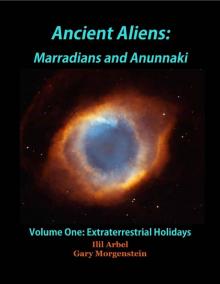 ANCIENT ALIENS: MARRADIANS AND ANUNNAKI: VOLUME ONE: EXTRATERRESTRIAL HOLIDAYS
ANCIENT ALIENS: MARRADIANS AND ANUNNAKI: VOLUME ONE: EXTRATERRESTRIAL HOLIDAYS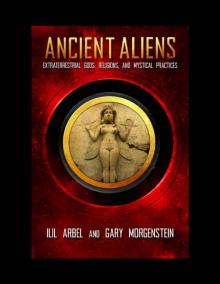 Ancient Aliens_Marradians and Anunnaki_Volume Two_Extraterrestrial Gods, Religions, and Mystical Practices
Ancient Aliens_Marradians and Anunnaki_Volume Two_Extraterrestrial Gods, Religions, and Mystical Practices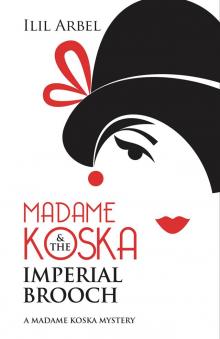 Madame Koska & the Imperial Brooch
Madame Koska & the Imperial Brooch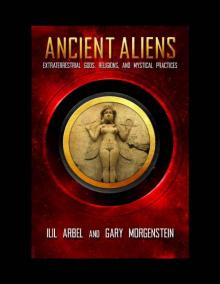 Ancient Aliens: Marradians and Anunnaki: Volume Two: Extraterrestrial Gods, Religions, and Mystical Practices
Ancient Aliens: Marradians and Anunnaki: Volume Two: Extraterrestrial Gods, Religions, and Mystical Practices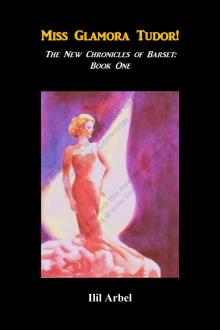 Miss Glamora Tudor!: The New Chronicles of Barset: Book One
Miss Glamora Tudor!: The New Chronicles of Barset: Book One The Cinnabar Box (Guardians of the Earth)
The Cinnabar Box (Guardians of the Earth)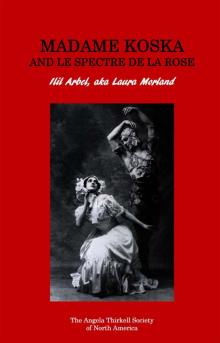 Madame Koska and Le Spectre de la Rose
Madame Koska and Le Spectre de la Rose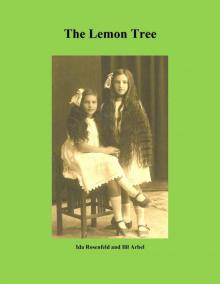 The Lemon Tree
The Lemon Tree Their Exits and their Entrances: The New Chronicles of Barset: Book Two
Their Exits and their Entrances: The New Chronicles of Barset: Book Two